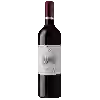
Winery Vieille VoieCôtes de Bourg
This wine generally goes well with poultry, beef or veal.
Food and wine pairings with Côtes de Bourg
Pairings that work perfectly with Côtes de Bourg
Original food and wine pairings with Côtes de Bourg
The Côtes de Bourg of Winery Vieille Voie matches generally quite well with dishes of beef, veal or game (deer, venison) such as recipes of shepherd's pie (quebec!), delicious veal stew or rabbit with marengo sauce.
Details and technical informations about Winery Vieille Voie's Côtes de Bourg.
Discover the grape variety: Pé de perdrix
This grape variety would be of Spanish origin, it was in this country mainly used as table grape. The Pé de perdrix has now completely disappeared. It should not be confused with the pied de perdrix, which is the red-tailed côt with black grapes.
Informations about the Winery Vieille Voie
The Winery Vieille Voie is one of of the world's greatest estates. It offers 2 wines for sale in the of Côtes de Bourg to come and discover on site or to buy online.
The wine region of Côtes de Bourg
The wine region of Côtes de Bourg is located in the region of Côtes de Bordeaux of Bordeaux of France. Wineries and vineyards like the Domaine Roc de Cambes or the Château Tayac produce mainly wines red and white. The most planted grape varieties in the region of Côtes de Bourg are Merlot, Cabernet-Sauvignon and Cabernet franc, they are then used in wines in blends or as a single variety. On the nose of Côtes de Bourg often reveals types of flavors of oak, sweet tobacco or pineapple and sometimes also flavors of cigar, ripe blackberries or bell pepper.
The wine region of Bordeaux
Bordeaux, in southwestern France, is one of the most famous, prestigious and prolific wine regions in the world. The majority of Bordeaux wines (nearly 90% of the production Volume) are the Dry, medium and Full-bodied red Bordeaux blends for which it is famous. The finest (and most expensive) are the wines of the great châteaux of Haut-Médoc and the right bank appellations of Saint-Émilion and Pomerol. The former focuses (at the highest level) on Cabernet Sauvignon, the latter on Merlot.
The word of the wine: Aging on lees
Maturing on the lees enhances the stability, aromatic complexity and texture of white wines, which gain in body and volume. This phenomenon is induced by autolysis, the process of self-degradation of the lees.






